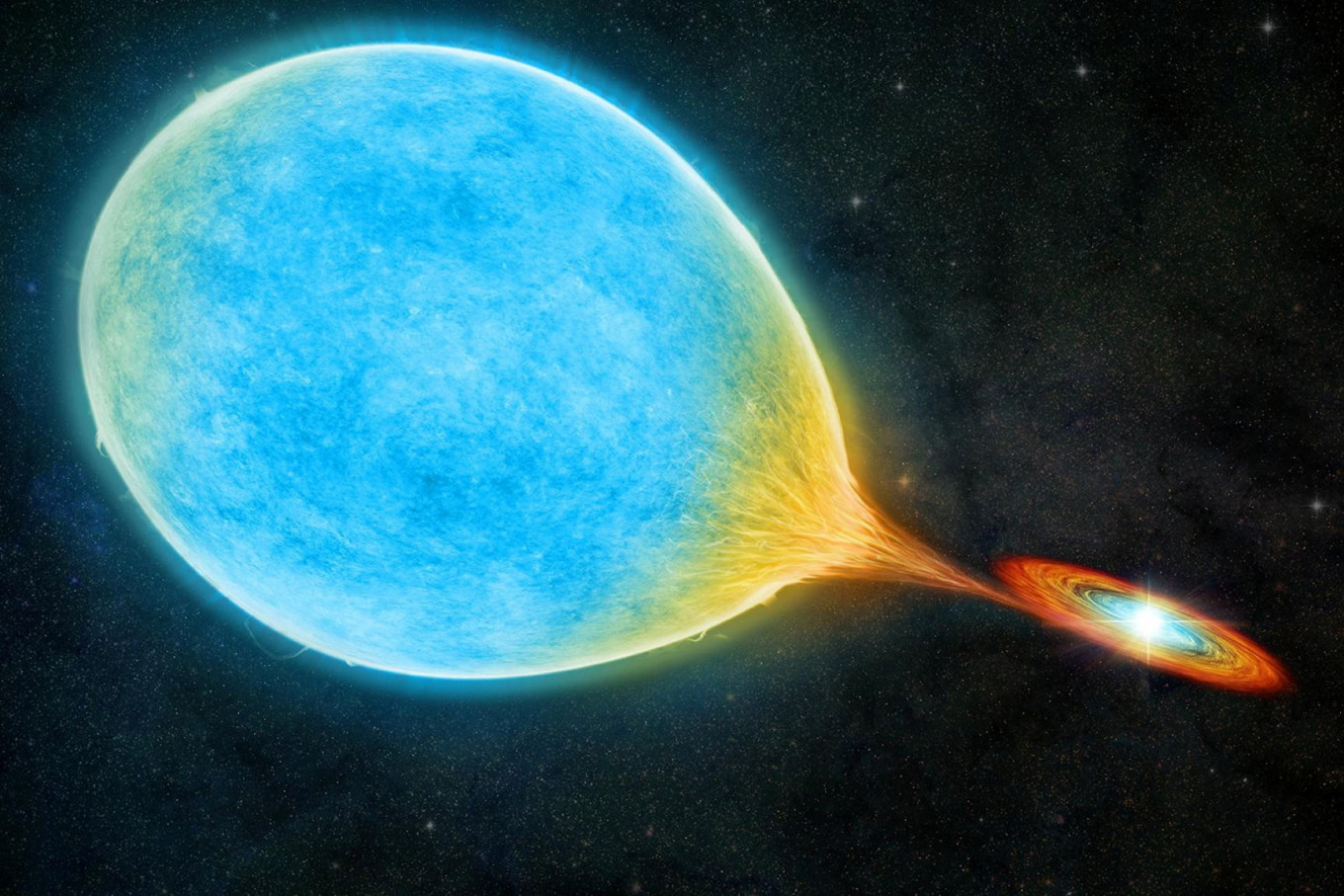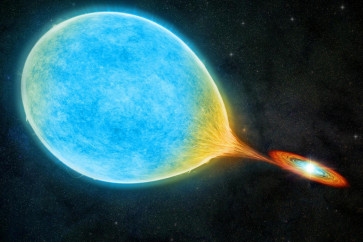Popular Reads
Top Results
Can't find what you're looking for?
View all search resultsPopular Reads
Top Results
Can't find what you're looking for?
View all search resultsA 'cataclysmic' celestial couple gone wrong - a star eats its mate
Researchers this week described one of these marriages gone wrong - a twosome that borders on the extreme, with the pair whirling around each other every 51 minutes in the fastest such orbital period known for a rare class of binary stars. As part of the drama, one star is eating its companion.
Change text size
Gift Premium Articles
to Anyone
U
nlike the lonely sun, about half the stars in our Milky Way galaxy are in a long-term committed relationship with another star, orbiting each another in a celestial marriage called a binary system.
Researchers this week described one of these marriages gone wrong - a twosome that borders on the extreme, with the pair whirling around each other every 51 minutes in the fastest such orbital period known for a rare class of binary stars. As part of the drama, one star is eating its companion.
The two stars are located about 3,000 light years from Earth in the direction of the constellation Hercules. A light year is the distance light travels in a year, 5.9 trillion miles (9.5 trillion km).
The system belongs to a class of binary stars known as "cataclysmic variables" in which a star similar to our sun orbits close to what is called a white dwarf, basically a hot and compact core of a burned-out star. Variable just means that their combined brightness varies over time when viewed from Earth. Cataclysmic refers to the fact that this luminosity changes dramatically - by a factor of 10,000 or more in some cases.
Over millions of years, the distance between these two stars has narrowed to the point that they now are closer together than the moon is to Earth.
"Imagine if the moon zipped across the sky 10 times a night. That's the kind of speed we are talking about," said Massachusetts Institute of Technology astrophysicist Kevin Burdge, lead author of the study published this week in the journal Nature.
Being close does not mean they are being nice to each other, though - the white dwarf is mercilessly siphoning material from its partner.



















